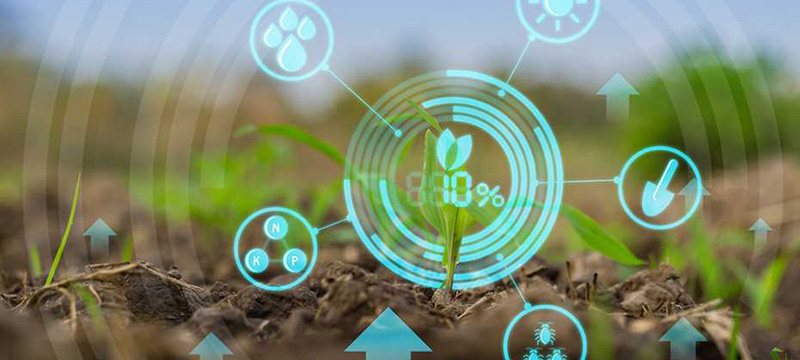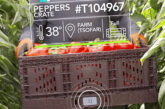
The intersection of agriculture and technology has given rise to a transformative movement in the form of Smart Agriculture, often referred to as Agriculture 4.0. The adoption of the Internet of Things (IoT) in agriculture is at the core of this evolution, allowing farmers to make data-driven decisions and optimize farming practices. In this article, we will delve into the world of IoT in smart agriculture, exploring its applications, benefits, challenges, and the promising future it holds for sustainable and efficient food production.
The IoT Revolution in Smart Agriculture
Agriculture has always been at the forefront of innovation, from the invention of the plow to the introduction of tractors and mechanized farming. Now, with IoT technology, smart agriculture is changing the way we cultivate and manage crops and livestock. IoT involves the connection of sensors, devices, and machinery to the internet, enabling data collection, analysis, and real-time decision-making.
Key Applications of IoT in Smart Agriculture
1. Precision Farming
Precision agriculture uses IoT to monitor and manage crops with precision, optimizing resource use. Sensors collect data on soil quality, moisture levels, and weather conditions. This information guides decisions about irrigation, fertilization, and pest control, reducing resource waste and increasing crop yields.
2. Livestock Management
IoT in smart agriculture isn’t limited to crops; it extends to livestock management. Sensors and GPS technology can track the location, health, and behavior of animals. This data helps farmers identify sick animals, manage herd movements, and improve breeding programs.
3. Climate Monitoring
IoT sensors can monitor environmental conditions, such as temperature, humidity, and precipitation. This data assists farmers in predicting weather patterns and adapting farming practices accordingly.
4. Automated Machinery
IoT-enabled machinery, such as tractors and drones, can perform tasks like planting, harvesting, and monitoring fields autonomously. This automation reduces the need for manual labor and increases efficiency.
5. Supply Chain Management
IoT technology helps optimize the supply chain by tracking the location and condition of agricultural products during transportation. This ensures that produce reaches its destination in optimal condition.
6. Irrigation Control
IoT sensors in soil can monitor moisture levels and automatically control irrigation systems, ensuring that crops receive the right amount of water at the right time.
7. Crop Health Monitoring
Drones and sensors can assess crop health by detecting diseases, nutrient deficiencies, and pest infestations. This early detection allows for timely interventions to protect crop yields.
8. Food Safety and Traceability
IoT technology can help ensure food safety and traceability by tracking the journey of agricultural products from farm to table. This is crucial for meeting food safety standards and responding to recalls if necessary.
Benefits of IoT in Smart Agriculture
The integration of IoT in smart agriculture offers numerous advantages:
1. Increased Efficiency
IoT technology optimizes farming operations by reducing waste, automating tasks, and providing real-time data for decision-making. This leads to increased efficiency in resource use and productivity.
2. Cost Savings
By automating and optimizing processes, farmers can reduce operational costs, such as labor and resource expenses. This results in cost savings for both small and large-scale agricultural operations.
3. Enhanced Crop Quality
IoT technology enables farmers to monitor crop conditions closely, ensuring that crops are healthy and of high quality. This is essential for producing crops that meet market standards.
4. Sustainability
Smart agriculture promotes sustainable practices by reducing resource waste, minimizing the use of chemicals, and improving the environmental impact of farming.
5. Increased Crop Yields
IoT technology helps farmers maximize crop yields by optimizing conditions and taking proactive measures to protect crops from diseases and pests.
6. Climate Resilience
Climate monitoring and data analysis can help farmers adapt to changing weather patterns and reduce risks associated with extreme weather events.
Challenges and Considerations
While IoT in smart agriculture offers numerous benefits, it also poses challenges and considerations:
1. Data Security and Privacy
Collecting and transmitting sensitive agricultural data raise concerns about data security and privacy. Protecting this information is crucial for farmers and their partners.
2. Connectivity
Many rural areas lack reliable internet connectivity, which can hinder the adoption of IoT technology in smart agriculture. Expanding network coverage is essential for reaching all farmers.
3. Cost of Implementation
The initial cost of implementing IoT technology can be a barrier for some farmers, especially those with limited resources. Government support and subsidies may be necessary to facilitate adoption.
4. Education and Training
Farmers need the knowledge and skills to use IoT technology effectively. Education and training programs are necessary to ensure that farmers can take full advantage of smart agriculture practices.
5. Regulatory Compliance
IoT in agriculture must adhere to regulatory requirements, especially regarding data protection and food safety standards.
The Future of IoT in Smart Agriculture
As technology continues to advance, the future of IoT in smart agriculture looks promising. Here are some trends and developments to watch for:
1. Artificial Intelligence (AI)
IoT and AI will work together to analyze vast amounts of data, providing insights into crop management, disease detection, and precision agriculture.
2. Blockchain Technology
Blockchain can enhance traceability and transparency in the agricultural supply chain, ensuring the authenticity of data and promoting trust among stakeholders.
3. Autonomous Farming
Autonomous vehicles and robots equipped with IoT sensors will become more prevalent, performing tasks like planting, weeding, and harvesting with minimal human intervention.
4. Digital Twins
Digital twins are virtual replicas of physical objects, like crops or livestock. These can help farmers simulate various scenarios and make informed decisions.
5. Remote Sensing
Advanced remote sensing technology, such as satellite imagery, will provide farmers with more data for monitoring and decision-making.
Conclusion
The Internet of Things is revolutionizing smart agriculture by offering precision, efficiency, sustainability, and improved crop quality. Challenges related to data security, connectivity, and education must be addressed to ensure that the benefits of IoT in smart agriculture are fully realized.
As IoT technology continues to evolve, it will remain a driving force in agriculture, offering a glimpse into a future where farming practices are more efficient, sustainable, and resilient, ultimately meeting the challenges of feeding a growing global population.





